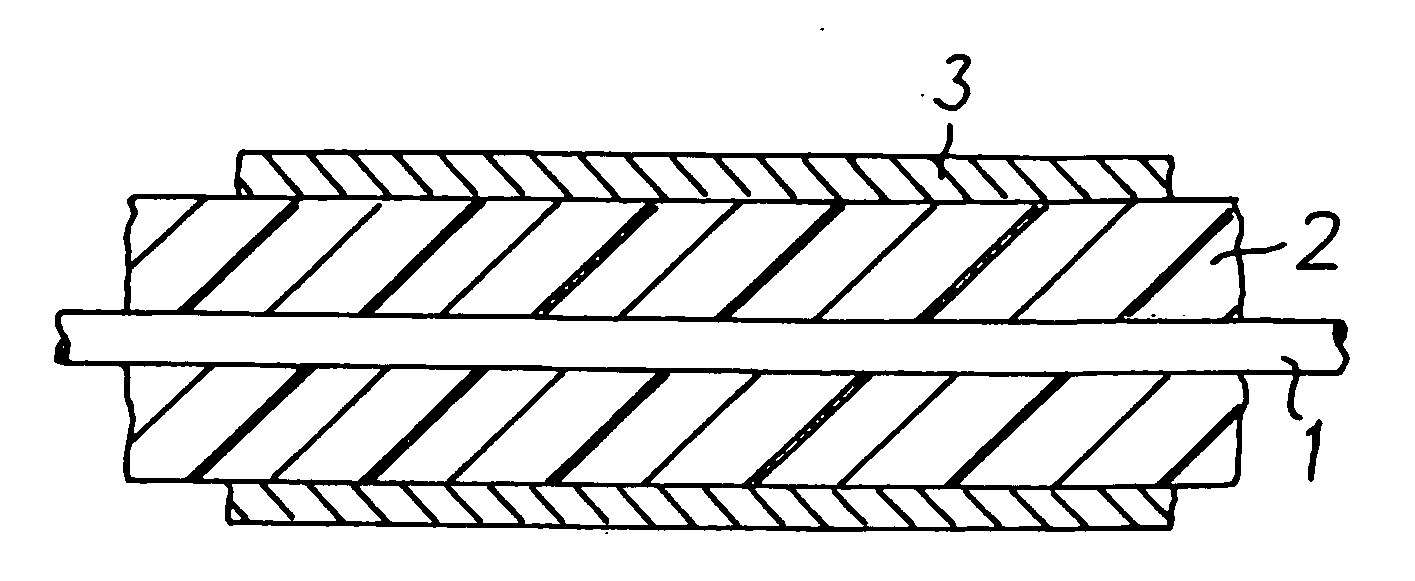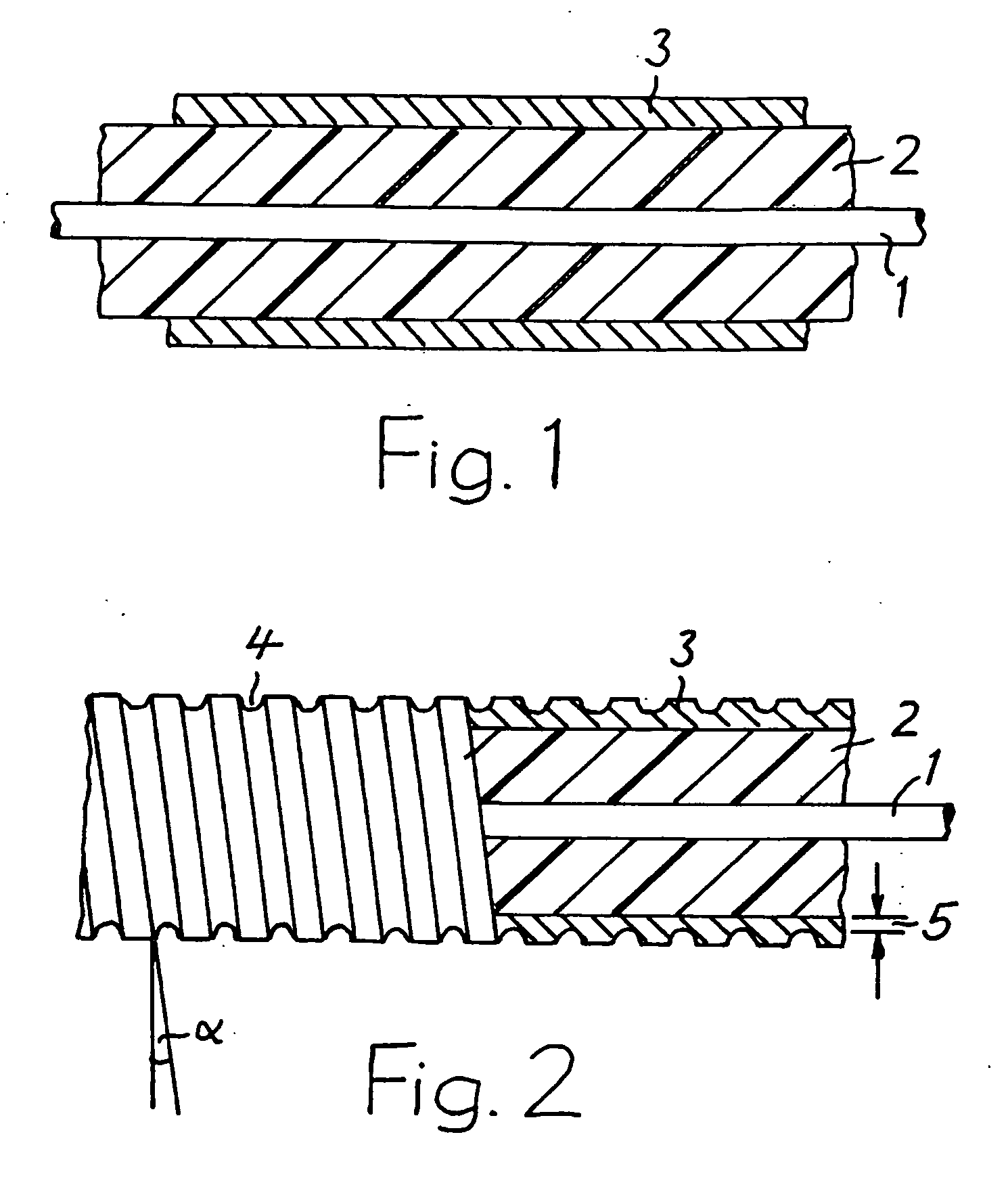Temperature-resistant electrical line
- Summary
- Abstract
- Description
- Claims
- Application Information
AI Technical Summary
Benefits of technology
Problems solved by technology
Method used
Image
Examples
Embodiment Construction
[0010]The line illustrated schematically in FIG. 1 as a section is known per se. It has a central electrical conductor 1, which is surrounded by insulation 2 made from a mineral material. In a preferred embodiment, the conductor 1 is a heating conductor. As a deviation from the illustration in the drawing, two or more conductors may also be provided. A metallic tube 3, which is preferably made from steel and bears against the insulation 2, is fitted over said insulation 2. The line has been produced corresponding to the method described at the outset. It therefore already has the reduced dimensions in comparison with the initial form. These dimensions are, for example, 17.5 mm for the outer diameter of the insulation 2 and 1.5 mm for the wall thickness of the tube 3. As a result of this thick tube 3, the line, which without the tube is flexible per se, is so rigid that, as has already been mentioned further above, it cannot be further-processed using methods and machines conventiona...
PUM
| Property | Measurement | Unit |
|---|---|---|
| Fraction | aaaaa | aaaaa |
| Angle | aaaaa | aaaaa |
| Angle | aaaaa | aaaaa |
Abstract
Description
Claims
Application Information
 Login to View More
Login to View More - R&D
- Intellectual Property
- Life Sciences
- Materials
- Tech Scout
- Unparalleled Data Quality
- Higher Quality Content
- 60% Fewer Hallucinations
Browse by: Latest US Patents, China's latest patents, Technical Efficacy Thesaurus, Application Domain, Technology Topic, Popular Technical Reports.
© 2025 PatSnap. All rights reserved.Legal|Privacy policy|Modern Slavery Act Transparency Statement|Sitemap|About US| Contact US: help@patsnap.com


